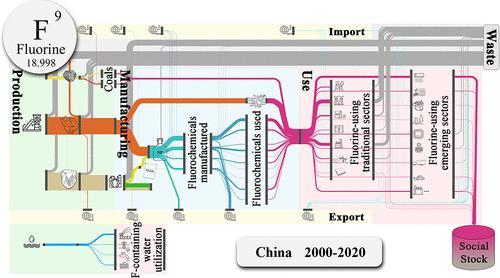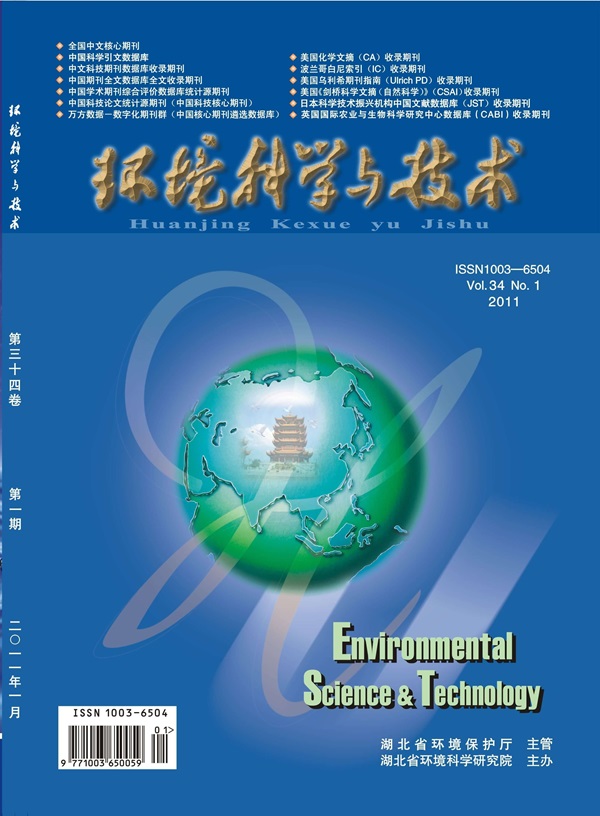Advancing Sustainable Fluorine Management in China Based on Evolution of the Anthropogenic Cycle during 2000–2020
IF 10.8
1区 环境科学与生态学
Q1 ENGINEERING, ENVIRONMENTAL
引用次数: 0
Abstract
Fluorine (F) has substantial social and environmental significance. Despite its high natural abundance, which often leads to the neglect of its sustainable management, its primary source, fluorspar, is limited and nonrenewable. As the world’s largest producer and consumer of F resources, China encounters considerable challenges in managing these resources sustainably. However, a comprehensive understanding of F flows across China’s economy has been notably absent. This study establishes a national-level material flow analysis (MFA) framework to examine the circulation and accumulation of F substances across various sectors in China from 2000 to 2020. The MFA encompasses over 200 F-containing products and 15 key sectors, tracking F flows through the stages of production, manufacturing, use, and waste management. Key findings show that China’s F resource supply increased from 2297.9 kt in 2000 to 6392.2 kt in 2020, with 91.1% sourced from domestic ore mining. F consumption for manufacturing F-containing products rose from 270.1 to 2462.9 kt over the same period. Traditional sectors like metallurgy, cement production, and electrolytic aluminum dominated F consumption, while emerging sectors like photovoltaics experienced rapid growth. China has been a net exporter of F resources, with exports totaling 14,732.3 kt compared to 1931.1 kt of imports over the two decades. Nonetheless, China’s role in global F trade has shifted from primarily exporting ores to becoming a major producer and exporter of F-containing products. This study provides a comprehensive analysis to date of China’s F resource flows, offering critical insights for policymakers and industry stakeholders to enhance sustainable F management practices and address key challenges related to resource supply, utilization efficiency, and environmental impacts.

求助全文
约1分钟内获得全文
求助全文
来源期刊

环境科学与技术
环境科学-工程:环境
CiteScore
17.50
自引率
9.60%
发文量
12359
审稿时长
2.8 months
期刊介绍:
Environmental Science & Technology (ES&T) is a co-sponsored academic and technical magazine by the Hubei Provincial Environmental Protection Bureau and the Hubei Provincial Academy of Environmental Sciences.
Environmental Science & Technology (ES&T) holds the status of Chinese core journals, scientific papers source journals of China, Chinese Science Citation Database source journals, and Chinese Academic Journal Comprehensive Evaluation Database source journals. This publication focuses on the academic field of environmental protection, featuring articles related to environmental protection and technical advancements.
 求助内容:
求助内容: 应助结果提醒方式:
应助结果提醒方式:


